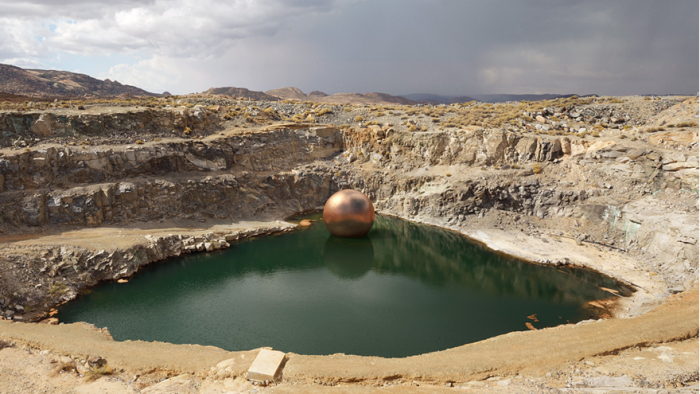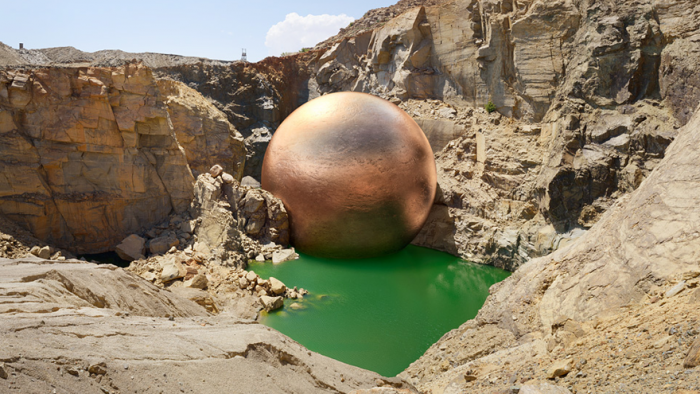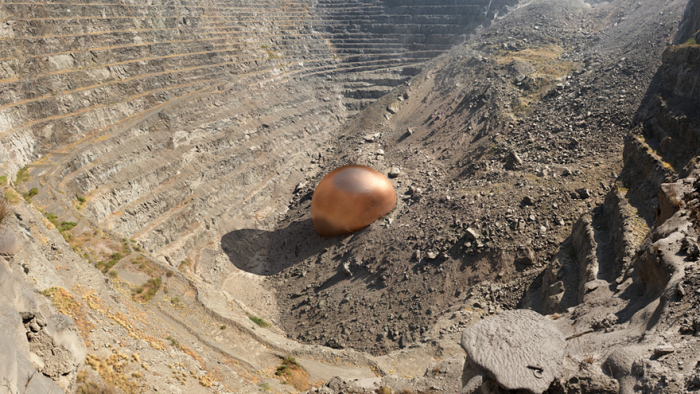Former Emerging Creative Dillon Marsh investigates isolated landscapes through photography. In his series, “For What It’s Worth” the Capetonian artist explores the vestiges of the South African mining industry and contemplates the unspoken expenses of pulling precious metals out of the Earth.
Using landscape photography in combination with computer generated images in post-production, Marsh portrays the total amount of metal derived from each site (as a glimmering sphere of copper) embedded in the abandoned ruins of the mine.
The photographer creates a visual juxtaposition between the landscape’s natural devastation and the unnatural, alien-like ball of metal fitted snugly in each mine’s crater.
Apart from the natural disruption of the mining industry, Marsh aims to highlight the temporal financial stimulation that these mines bring to surrounding communities – only to be abandoned once the mine’s ore is depleted.
According to the photographer, “Whether they are active or long dormant, mines speak of a combination of sacrifice and gain. Their features are crude, unsightly scars on the landscape – unlikely feats of hard labour and specialised engineering, constructed to extract value from the Earth but also exacting a price."
"For What It’s Worth" represents the effect of unsustainable economies – industries that skyrocket for a number of years, then crash inevitably. The images depict the bone-dry region of Namaqualand whose towns saw rapid development as mining communities would settle nearby.
Each photograph features a distinct (now defunct) mine. The locations that Marsh travelled to include the Blue Mine (near the town of Springbok), Tweefontein Mine (Concordia) and the Copperton Mine.
"The CGI objects represent a scale model of the materials removed from each mine, a solid mass occupying a scene showing the ground from which it was extracted.
By doing so, the intention is to create a kind of visualisation of the merits and shortfalls of mining in South Africa, an industry that has shaped the history and economy of the country so radically," writes Marsh.









